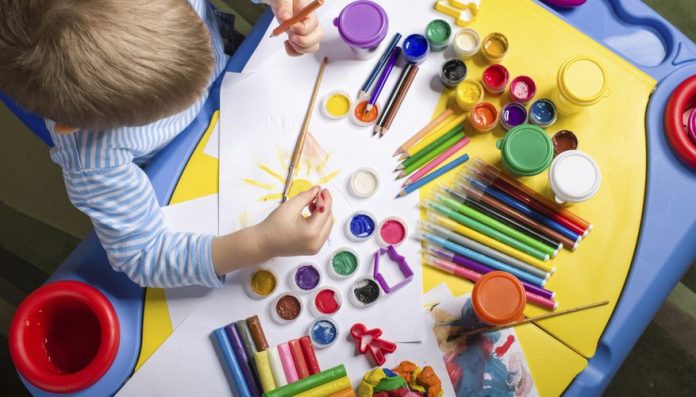If you want to make some adjustments to the decor of your baby’s room, first consider the effect of the colors you choose on the walls or interiors on your child’s mood, behavior and state of mind. Have you ever noticed, for example, an increase in your child’s behavioral activity, severity or insomnia and discomfort in a room for long periods of time? Have you turned to the paint colors and predominant color in the decor of this room?
On the contrary, have you noticed your child’s immortality to sleep quickly in peace and quiet, or increase his ability to focus on studying, playing, or even eating and listening to you in one room of the house? The effect of each color in your home rooms affects your child and you also noticeably. Psychologists have made it clear how much the effect of a color of the usual colors in the home decoration and painting, where it becomes ideal? And when used incorrectly and lose its good properties?
What colors affect the increase or decrease of your child’s concentration and temperament?
Some studies have shown that bold colors interlaced together in stark, sharp degrees in motion, like decorations such as circles, lines, and geometric shapes never help to increase your child’s concentration, but rather drive him to distract, exhaust and loosing focus for long periods, Such as increase of movement, violence, vigilance and tension, with the stress of the nervous system of the child, which increase his screams and loud voice and crying unjustified.
On top of these colors the bright red and yellow color, as well as one degree of greenish green color if mixed with the color of the previous colors. Although these colors mentioned above, if used in dining or living rooms, for example, are mixed with cool colors such as white and beige, their effect will be great as an appetizer, a source of energy, pleasure, joy and abundance in small spaces and creativity. But not recommended in children’s rooms whether for infants or at school and before.
What colors are recommended in children’s rooms?
The calm orange, with warm blue, and a green added to it a lot of white, as well as pink and of course white. All of these colors are recommended in gentle tones such as pastel tones, which give energy, pleasure, comfort and sleep in your child’s room, increase the ability to focus and creativity, and improve his excessive behavior and sleep patterns.
The warm green color acts as a pacifier for young children, while warm blue is used to reduce anxiety, tension and stress, so you see it as a frequent use in hospitals and infant rooms, helping to feel quiet and restful sleep and restlessness of eyes and reduce tantrums.
The white color gives a feeling of sleep and the feeling of reassurance in the young, and the pink color as calm and comfort and a sense of recovery also.
In general, color experts advise you not to mix more than two colors in your child’s room of any size, especially small spaces, with one color neutral without any decorations, inscriptions and drawings. In the children’s rooms, it is preferable to use only one wall or part of it to make simple or similar engravings or drawings, such as longitudinal lines.
Finally, do not forget to distribute furniture in your child’s room and avoid them as much as possible with good ventilation, sunlight and adequate evening lighting in the room. This will affect your child’s mood, concentration and state of mind, so avoid many of your child’s behavioral problems starting with the colors of his room.



